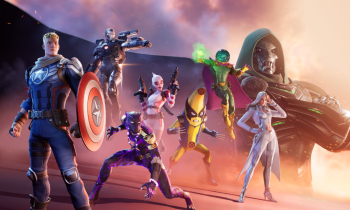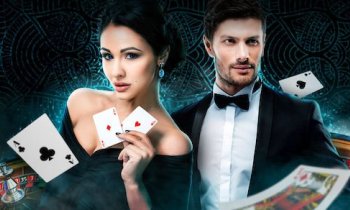Table of Contents
Clair Obscur: Expedition 33 is the debut product from Sandfall Interactive, a studio from France. This reveals two things about them. First, they're a collective that loves to showcase their talent. And second, they truly know how to express it. It's hard to believe that a new studio could debut with a turn-based RPG possessing the splendor and bold experimentation of Lost Odyssey or Legend Of Dragoon. When combined with a strange beauty that's haunting yet joyful, it seems as if created from a fusion between masters Miyazaki and Yoko Taro.
Unique Setting and Narrative
"A bloodless guillotine," that's how Emma, sister of protagonist Gustave, describes the annual expedition of Lumiere's citizens. This is a journey to a distant horizon to defeat an entity called the Paintress. Each year, this being paints a new number on her monolith. This ritual erases everyone of that age from existence in swirls of dust and flower petals. During the annual festival, those whose turn it is to die wear red and white garlands around their necks, say their goodbyes, and lay their belongings in the streets for those left behind.
For 67 years, no expedition has returned. What was once a prestigious journey now carries an atmosphere of death and failure. Many resign themselves to fate, hoping only to create a slightly less dangerous path for the next unfortunate group. But Gustave is different. He's an inventor with touching determination. He believes this time will be different. Maelle, his adopted daughter, thinks the same and decides to join the expedition of the 32-year-olds despite being only half their age.

After farewells at a festival tinged with wine and foreboding, the expedition departs and is immediately thrust into hell. This continent resembles a blend of Final Fantasy X's Belle Époque style with Henson's Labyrinth world undergoing Annihilation's transformation. Everything consists of shimmering, oil-slick colors. Creaking architectural structures, withered corpses, cloth effigies prone to misfortune, all stagger through fairytale forests and islands where rocks take the form of gigantic Melpo and Thalia masks. The landscape simultaneously evokes the promise of primordial fertility and the end of time itself. The world map is so vast that we played for 45 hours in a game supposedly only 30 hours long and still hadn't discovered all its secrets.
Groundbreaking Turn-Based Combat
"Turn-based RPG but you can dodge and parry" sounds like an advertising gimmick, and might have been if Sandfall's ambition had stopped at simply giving you something to do while waiting for your turn. Instead, vivid animations give each enemy distinct timing characteristics, reminiscent of "Soulsian" style. Expect personalities and presences—lumbering, dancing, writhing—that you'll want to study carefully. Even at its most basic level, the combat here is lively and authentic enough to make big names like Atlus seem "sleepy" by comparison.
Indeed, if you're someone who likes to snack while playing JRPGs, you might find its demands for constant presence and reflexes somewhat bothersome. But if you meet that requirement, you'll discover an exhilarating challenge that will have you seeking out every possible battle.
However, reflexes only reinforce your defense. To clear a path to the Paintress, you'll need to truly engage with character ability layers, equipment, and perk combinations to create the most efficient combos. There's much experimentation with deckbuilder elements, whether accumulating and using status effects or calculating each action point and rare opportunities to repeat turns. It is also noteworthy that even when playing New Game+, you can frequently discover new ways to use old skills in fresh combinations with astonishingly effective results.
Each of the five playable characters feels distinct, whether it's the transformations from Monoco's severed leg or the science witch Lune's cycle of accumulating and releasing elements. It might be easy to stick with the results of 15 minutes of menu tinkering and refuse to experiment until you're knocked out of complacency by a difficulty spike. But there's always an easier mode if you're eager to see the next story development.
An Emotional Journey of Discovery
Beyond the main path, hidden at the end of obscured side roads in sometimes terrifyingly complex dungeons, are small details that elevate a trip into an adventure. Pale, strangely serene monsters with unique requests. A melancholy estate, detached from time and space, to which you'll return dozens of times through countless secret doors. Silly beach minigames where you play air hockey with explosive puppets or frustrating parkour challenges with controls not designed for it. A series of optional super bosses, secret yet bold enough to loom on the map, daring you to test your skills. It's a world vast enough to make players frequently note "need to come back later."
Clair Obscur's most profound moments often lie outside the main plot. Instead they arise from how the writers take the central idea—a dying city, growing younger, born with a time limit on their lives—and ask questions. How much do you really owe a society that doesn't hesitate to sacrifice you when the time comes? What does it feel like to accept losing someone to Gommage (the erasure ritual), only to lose them to another tragedy? When should parents begin preparing children to face the inevitable, and how low must that number go before all of Lumiere decides to stop bringing children into a world predestined for doom? Clair Obscur offers no judgments or easy answers, only a gradually fading light and an incredibly endearing group that you'll want to watch struggle against fate.
Strong voice acting throughout, especially from Jennifer English, more than compensates for notable budget sacrifices in facial animations. When Verso (voiced by Ben Starr, a reserved if not gruff character) is asked, after a tragic scene, whether he wants a hug from his bumbling giant friend Esquie—Verso says yes, he would like a hug. That moment truly impressed. We've become so accustomed to the exhausting rhythm of pop culture's sardonic detachment that even a simple reversal can have powerful impact. Verso just wanted a hug from his old friend. It's endearing.
Outstanding Music and Art Direction
The music sits somewhere between FFX and Nier: Automata—heroic, cheerful, sweet, sad, sometimes with jazz, electronic, or festive undertones. It perfectly complements the color palette and background tone that we admit completely won us over. The style is fairy tale-like without being saccharine. Deep and rich without seeming self-important, perhaps lacking a bit of erudition. Cheerful without falling into the seemingly inevitable trap of trendy irony of our time. Dark but never ugly. And yes, it's often captivated by its own grandeur, but there's a reason we use the word 'empty' to qualify 'grandeur' when it deserves it. This is grandeur filled with emotion. Unrestrained and unembarrassed. Like grown children playing make-believe. Above all, it feels personal, full of strange brushstrokes that a more established studio might have erased.
"Very rarely," one reviewer shares, "do I play an RPG that makes me feel like I'm ten years old again. Rebirth. Cris Tales. Replaying Suikoden... You wait for a game to take you back there, largely certain you've outgrown the ability to feel that way because now you have adult concerns... I can't say whether Clair Obscur will affect everyone the same way, but it certainly did that for me. Honestly, I'm not ready to leave yet. This is something special and rare: a story that feels like someone wanted to tell it to the point of pain."














Comments